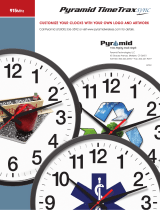
1.
LAG BOLT APPLICATION
Determine the desired rail placement and
snap a line on to the deck to ensure that all
posts are aligned properly (Fig. 1). Ensure
sufcient mounting structure exists in the
areas to receive posts and install blocking if
necessary. Plumb the posts using the shims
provided, secure the posts in place (Fig. 2),
and install trim ring on each post.
THROUGH BOLT APPLICATIONS
For through bolt applications, use the
provided secondary mounting plate when
securing posts in place. Drill though the
mounting surface using a ³⁄8" drill bit. Using
appropriate hardware (sold separately), align
bolts through the post mounting ange and
secondary mounting plate. Tighten bolts,
secure in place, and install trim ring on each
post.
NOTE: Post kits include leveling shims,
post cap, 1 piece trim ring, and secondary
mounting plate. Posts are designed and
manufactured to accept 5/16" fasteners.
Post mounting hardware is sold separately.
Be sure to use appropriate fasteners for
your installation. For commercial use, Avalon
Heavy Duty posts are required. Check local
building codes for load requirements.
Tip: Leveling shims can be easily cut using a
wood chisel or utility knife. Please keep safety
in mind during installation and ALWAYS wear
safety goggles.
1.
Place rail panel across the opening and adjust
to ensure equal baluster spacing on each end
(Fig. 1). Mark the rail panel at the post face at
all four locations shown in Figure 1. Measure
¼" from the marks towards the center of the
panel (to allow for bracket clearance, Fig. 2)
and cut the panel at this location on all four
ends using a carbide tip blade of at least 60
teeth.
2.
Open the paper bracket mounting template
(included with brackets), align base trim with
appropriate guide on template, and secure
template in place using a piece of tape. Pre-
drill through the desired marked locations
on the template using a ⁄8" drill bit. Remove
template, align brackets (Fig. 3) with the
holes ensuring that brackets are square, and
fasten brackets in place using the 1½" screws
provided.
3.
Test t the rail panel. Once proper t is
ensured, press bottom bracket covers onto
the ends of the bottom rail (Fig. 4), and set
panel in place. Pivot support foot in place
under the rail as shown (Fig. 5). Secure
support foot to the mounting surface using
the 1½" screw(s) provided and press t cover
into place using plastic plug(s) as shown (Fig.
6 & 7).
Need a little help installing your railing?
www.rdirail.com/support/installation-videos.html
Post Installation Level Rail
Top Level Bracket Bottom Level Bracket
Fig. 1 Fig. 6
Fig. 5
Fig. 4
Fig. 1
Fig. 2
Fig. 2 Fig. 3 Fig. 7




